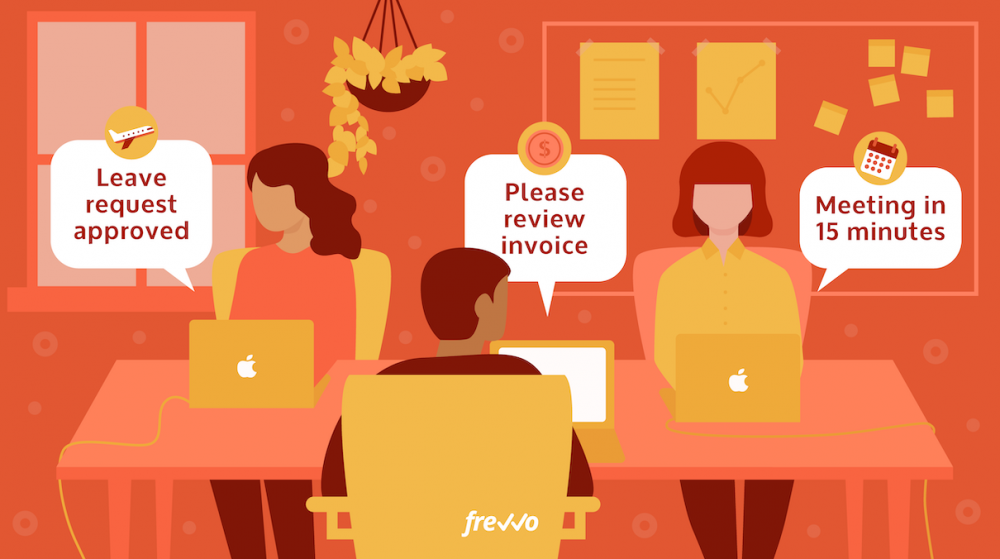In every office, regardless of industry, plenty of processes can be streamlined or automated entirely to reduce the administrative burden on employees.
For most employees, it’s difficult to remember exactly which steps and rules to follow for each of these processes, especially if they don’t form part of their day-to-day role.
For instance, many employees struggle to get expense claims right because they’re not accountants and maybe don’t remember the finer details of the company’s expense policies.
Automation helps to ensure that every step is followed, every time — and speeds up the time it takes to do so.
Keep reading to learn about all the ways automation can improve operational efficiency, and for our top 10 automation project picks.
Click the links below to jump straight to the section you want to learn more about:
- What Is Office Automation?
- What Are the Benefits of Office Automation?
- Our Top 10 Office Automation Project Picks
- Key Features of an Office Automation System
- Automating Office Processes With frevvo
What Is Office Automation?
Office automation means eliminating manual work by automating the routine tasks and processes that employees perform on a daily basis to make businesses function.
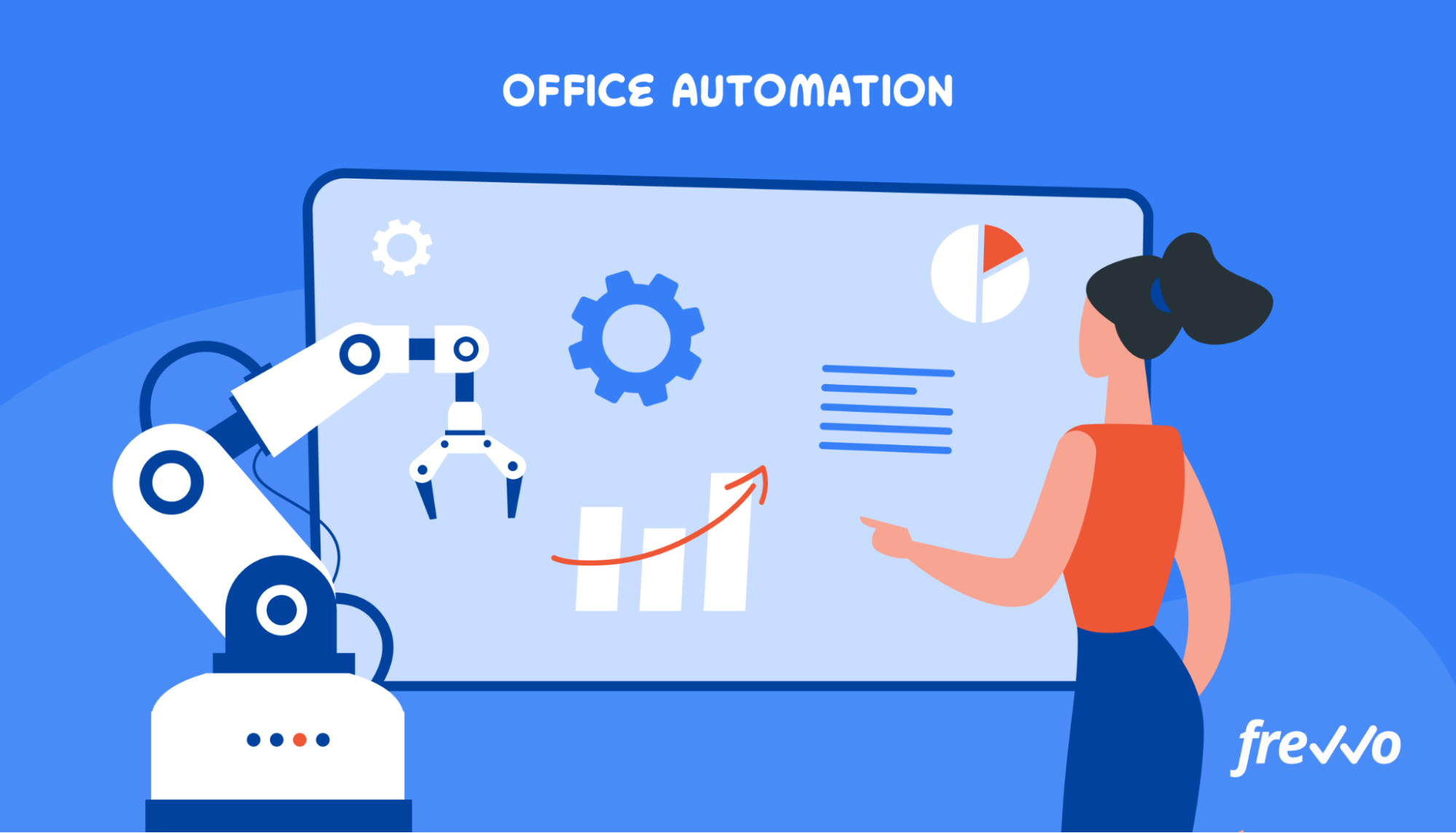
Office automation can reduce errors, improve compliance, and save a lot of time, allowing employees to focus on more engaging tasks. This translates into cost savings, happier employees, and better customer experiences.
If you’re unsure whether a process is a good candidate for automation, try breaking it down into individual workflows and granular tasks.
The best workflows to automate are the ones that feature repetitive tasks, and whose desired outcomes can be predicted and directed by rules.
Once you break a workflow down into individual steps, it’s easy to see which steps could be eliminated or significantly streamlined if you standardize and automate your workflow.
For example, the purchase requisition approval workflow may include:
- Completing a form
- Emailing the document to a manager for approval
- Waiting several days
- Sending follow-up emails
- The manager printing, signing and scanning the form, and sending it back
- Sending the form to the accounting department
- etc.
In the example above, you can eliminate the email and follow-up steps with automated routing and reminders.
You can also create conditional routing rules to make sure that company procurement policies are universally enforced, even when employees forget (or didn’t read) the policy.
You can also make the whole workflow run more efficiently (and sustainably!) simply by making forms mobile-friendly and e-signature-enabled.
Think of all the paper, time, productivity, and morale you could save by tackling a few automation projects.
What Are the Benefits of Office Automation?
Business processes are at the core of every organization. Turning to process automation allows you to streamline operations and increase efficiency across the board.
Here are some of the benefits of implementing an office automation system.
Increased Productivity
94% of employees perform repetitive and time-consuming tasks, such as entering data and creating documents. This leaves less time for higher-value work.

Automation lets you reduce and even eliminate mundane tasks altogether, allowing employees to be more productive.
Take document approvals as an example. Employees waste time when they have to chase signatures. With a process automation solution like frevvo, you can create workflows that route forms to the right approvers.
Fewer Errors
Manual processes are riddled with errors.
Employees may enter the wrong data when filling out a form or make a simple calculation error when adding up totals. These types of mistakes can delay work and cost a lot to fix.
Automation helps reduce the risk of errors. For example, you can digitize your forms and restrict the type of data that employees can enter.
You can take it a step further and have fields perform calculations automatically. This is useful for forms like purchase orders and invoices.
Improved Compliance
Manual processes can lead to compliance issues.
Consider the expense approval process. Employees typically have to fill out a form to claim work-related expenses. But if they claim out-of-policy items or forget to attach receipts, the finance team has to spend hours correcting these mistakes.
Automation tools help you improve compliance. For example, you can include a section on the form that lists out-of-policy items and require that employees include receipts with their claims.
Now that we’ve looked at some of the benefits of automation, here’s a list of our top 10 recommendations for office automation projects you can tackle this week.
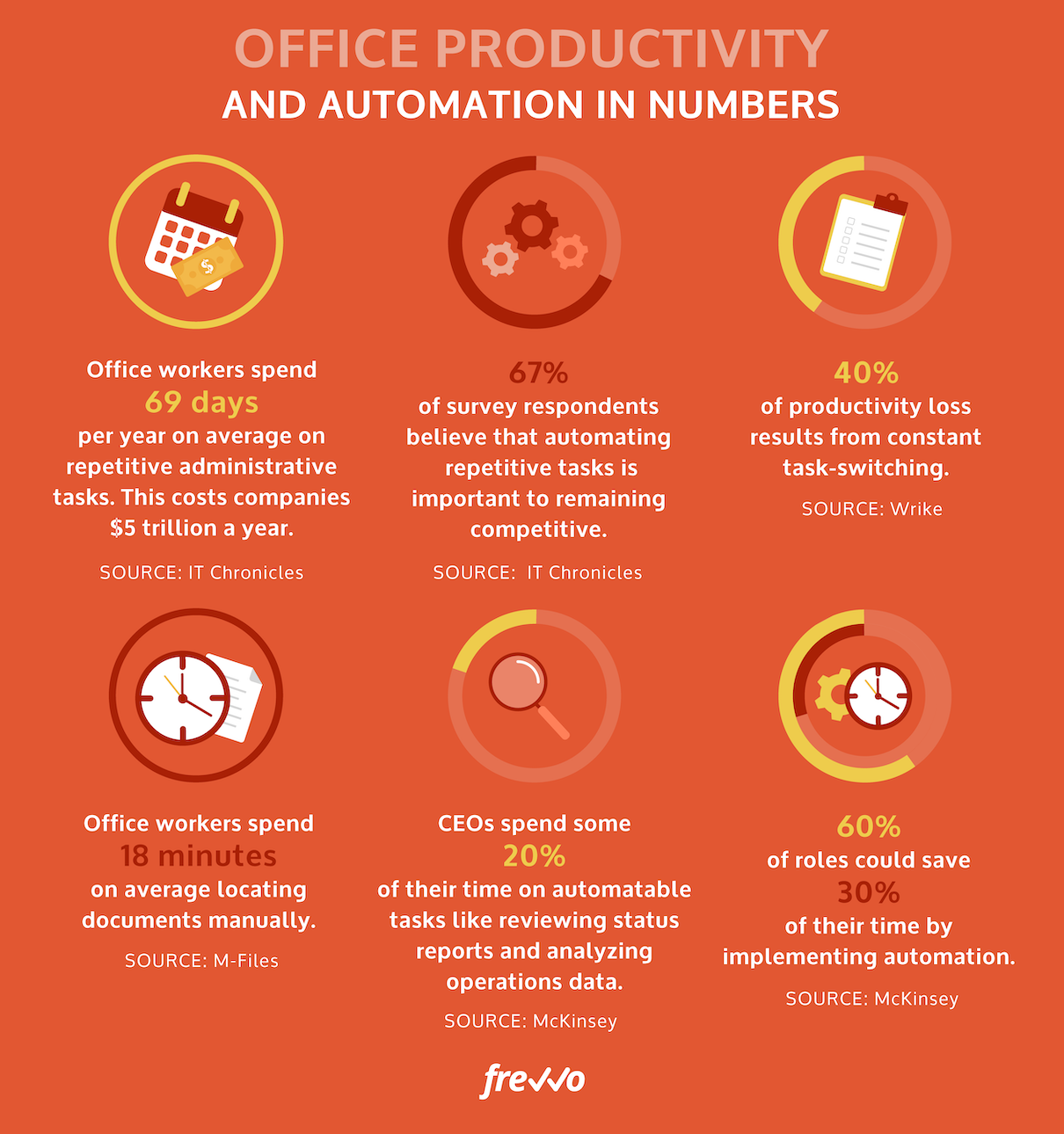
Our Top 10 Office Automation Project Picks
For each automation project, we’ve included links to blogs that give detailed instructions on how to pull this off using frevvo’s workflow automation software.
1. Data Entry
Data entry is an incredibly time-consuming task. Worse is the fact that manual data entry is prone to errors. These errors can turn out to be expensive if they go undetected — and let’s face it, the likelihood of errors going undetected is much higher without automation.
The good news is it’s easy to set up digital forms to capture data and link your forms to your SQL database or even to a cloud-based Google Sheet. This way, the information entered into the forms can be synced to automatically populate your database and vice versa, so forms are pre-populated with known information.
You can even add integrations like linking order forms to your inventory management software or connecting your accounting software to your accounts payable workflow.
READ MORE: How to Populate an HTML Form from a SQL Database and How to Automate Your Google Apps Workflow Approval and Docs for Increased Productivity
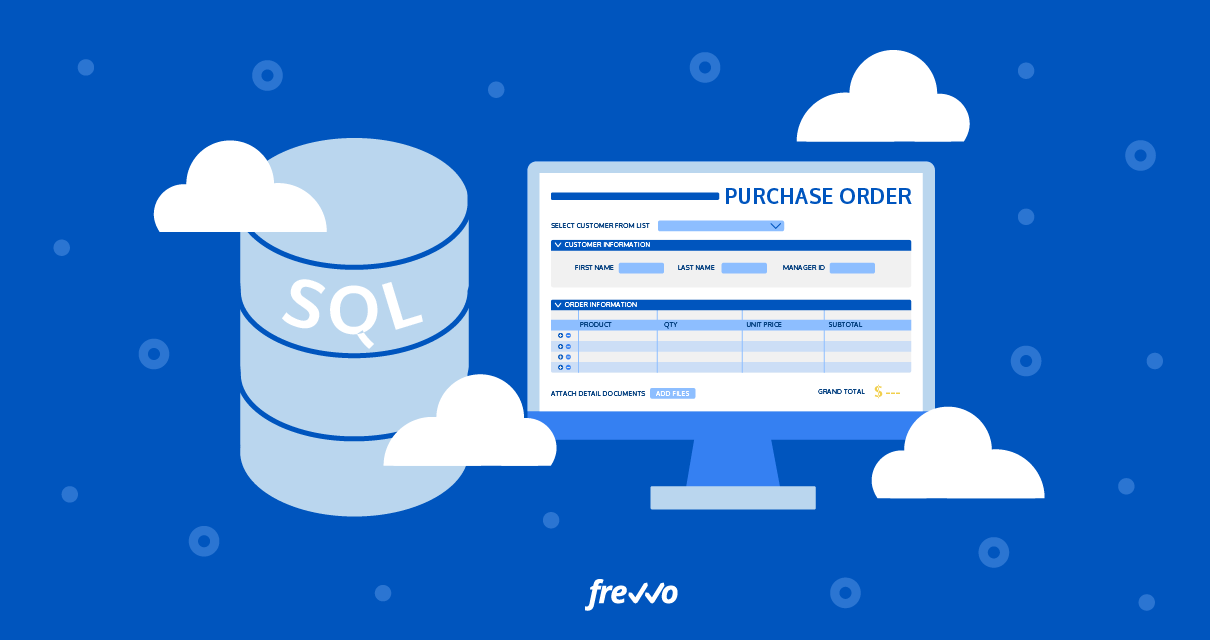
2. Electronic Signatures
If you’re like most people, you’ve printed documents so you can sign, scan, and email them. And then you probably threw those papers away (or you filed them even though you had a perfectly good digital copy on your computer).
This is not only incredibly wasteful but also takes a lot of time. It’s no wonder many people put off signing documents, especially if they don’t have a printer handy.
Then the document often sits forgotten in their inbox for days until someone checks in to see what’s causing the delay. This kind of bottleneck can bring project pipelines to a grinding halt and have other serious consequences on your business operations.
Meanwhile, it’s easy to set up fully legally binding electronic signature workflows — with automated reminders — without needing any coding knowledge.
Pro tip: make sure that the digital signature software you use is mobile-friendly so that signatories can sign them on the go.
READ MORE: Creating a Digital Signature Workflow
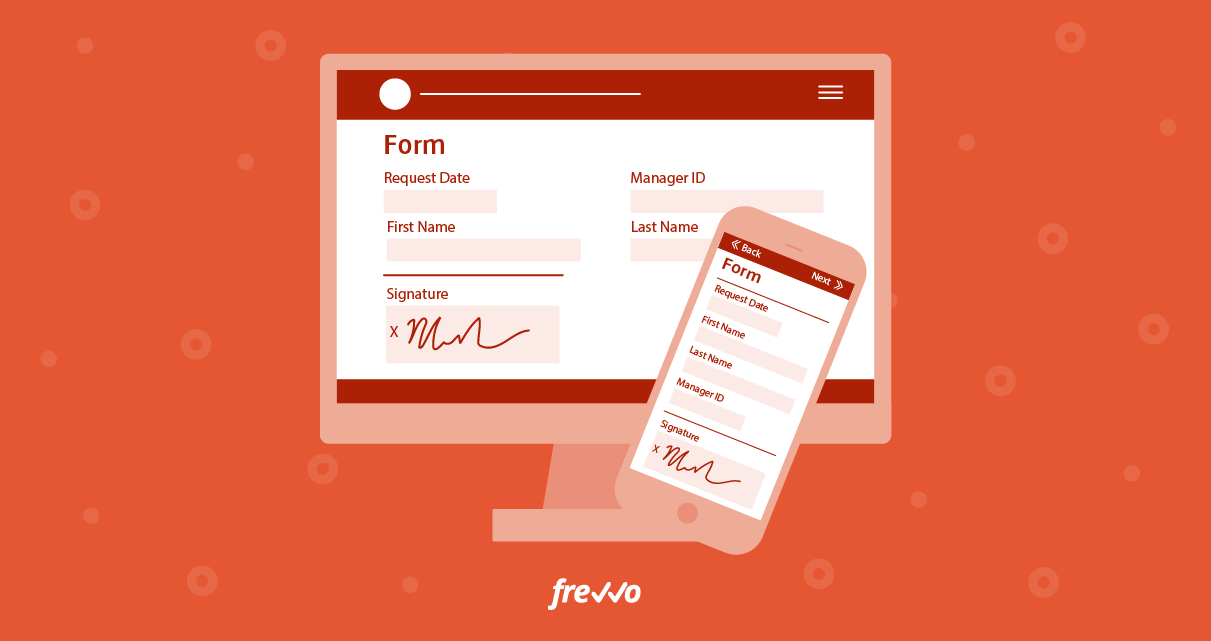
3. Expense Approvals
Around one-fifth of expense reports are filed incorrectly. Let that sink in for a minute.
Each time this happens, it leads to a lot of back-and-forth and wasted time, causing frustration for employees and managers alike. On the other hand, employees often wait a long time for their expenses to be approved and refunded.
Automating your expense claims approval workflow can help to improve compliance with your company’s expense policies while expediting refunds for employees — a win for everyone involved.
Luckily, it’s easy to consolidate your expense claims process with digital forms that let employees attach invoices and photos of receipts as proof of expenditure. You can set up rules that prevent forms that contain errors from being submitted, reducing the incidence of incorrectly filed reports.
Automated routing and notifications (including reminders) mean expense reports never go forgotten on desks or in inboxes, and workflow rules can automatically escalate claims when pre-set conditions are met.
READ MORE: Automating the Expense Approval Process in 8 Simple Steps
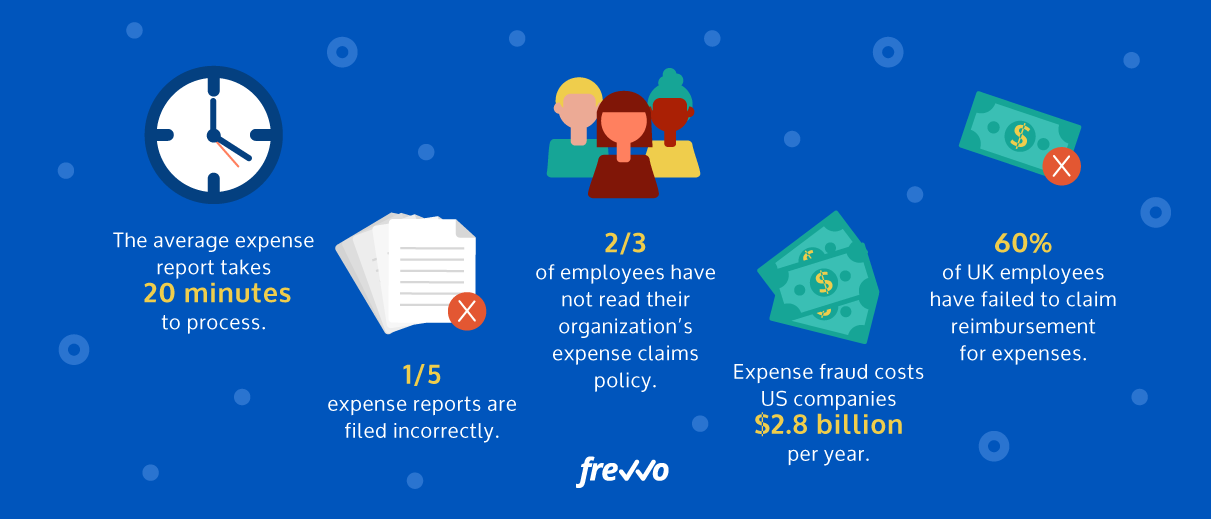
4. Invoice Approvals
Invoice approvals are an important part of maintaining control of your spending and protecting your business from fraud, errors, and the consequences of missing invoices.
Automating invoice approvals also means faster approvals, which means you’re more likely to benefit from early payment discounts and enjoy better relationships with your vendors — and your projects are more likely to run on time.
Much like automating expense approvals, you can easily streamline your invoice approval process by creating an automated workflow with a digital invoice template and automatic routing.
READ MORE: How to Automate the Invoice Approval Workflow in 3 Easy Steps
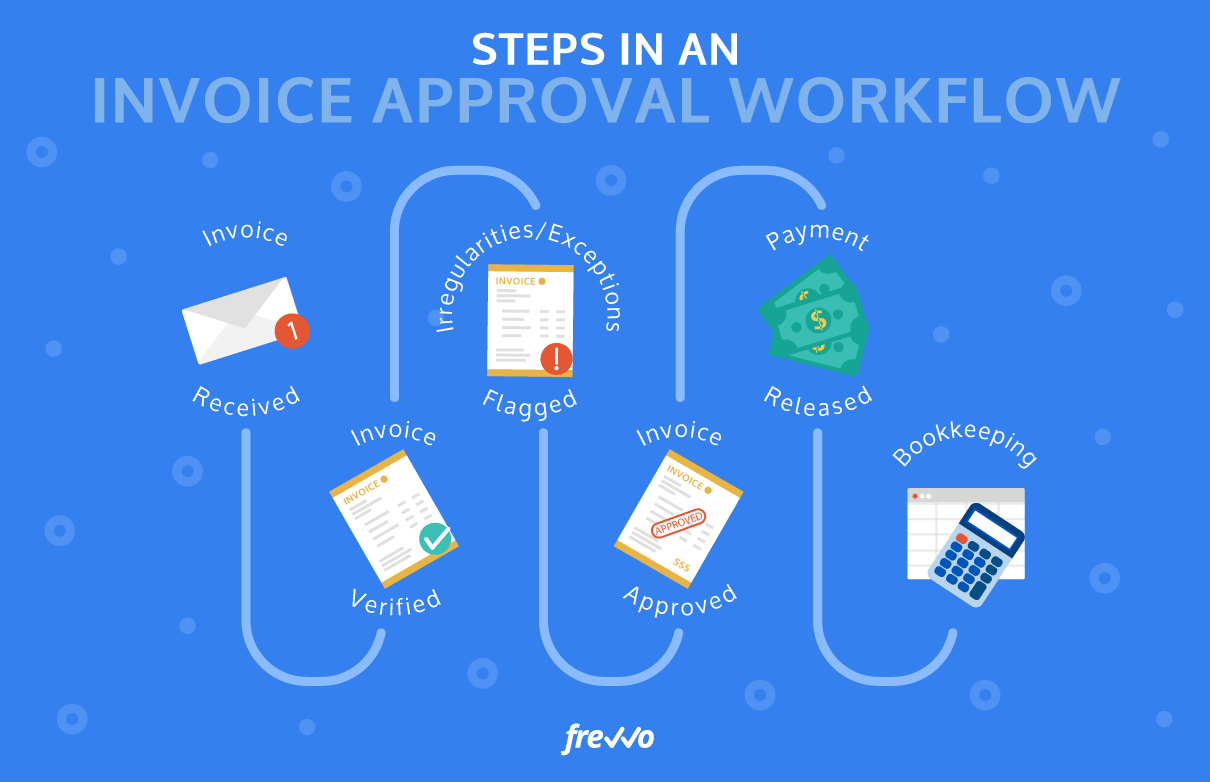
5. Vacation/Paid Time Off Requests
Getting vacation requests approved is one of those processes that should be really quick and simple but all too frequently lead to miscommunications and disgruntled employees.
It can be extremely discouraging for employees to have to wait for their time off to get approved because their manager or the VP is out of the office or simply hasn’t gotten round to it.
The first step to fighting this common cause for frustration is standardizing your vacation request process. For instance, you might create a condition that only requests for more than five days off require VP approval.
Some companies also have issues with employees forgetting monthly PTO application cut-off dates or policies around short-notice applications.
These kinds of challenges can be addressed with the help of automated reminders and a separate form with mandatory document attachments for special circumstances such as family responsibility leave.
READ MORE: How to Make Managing Employee Time-Off Requests Much Easier
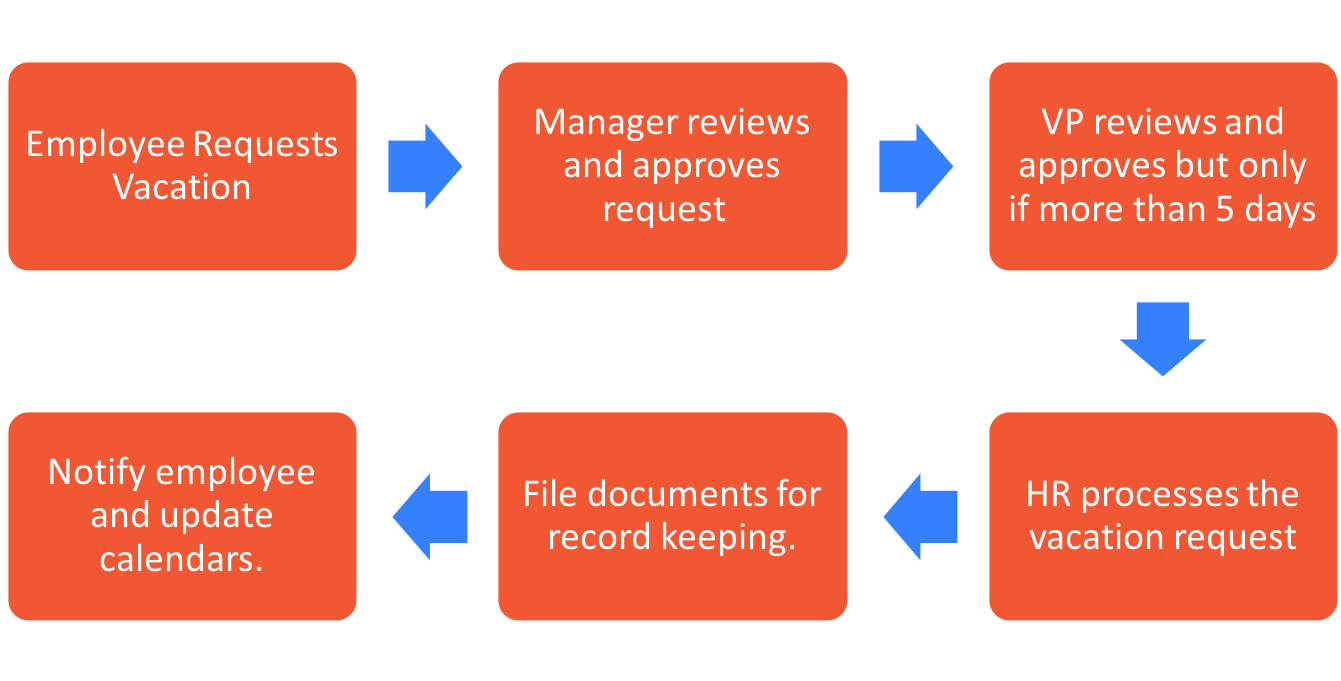
6. Purchase Orders
For the average employee who just wants to order some stationery, purchase orders (PO) may feel like an administrative annoyance, but they’re absolutely necessary for the accounts payable team.
Standardized and automated POs help to keep your operations within your budget by automatically enforcing your procurement policies and preventing maverick purchases.
They also help to make sure that the goods and/or services you’re receiving are up to standard in terms of quality and other delivery terms.
Without automation, POs can be messy and irregular, feature a LOT of paperwork, and often get sent for higher-level approval when it’s not really necessary, wasting everyone’s time with avoidable bottlenecks.
But if you create a standardized digital purchase order workflow and configure rules (e.g., that only POs exceeding $10K require VP approval), you can reduce the administrative burden significantly.
READ MORE: Purchase Order Automation: The Definitive Guide
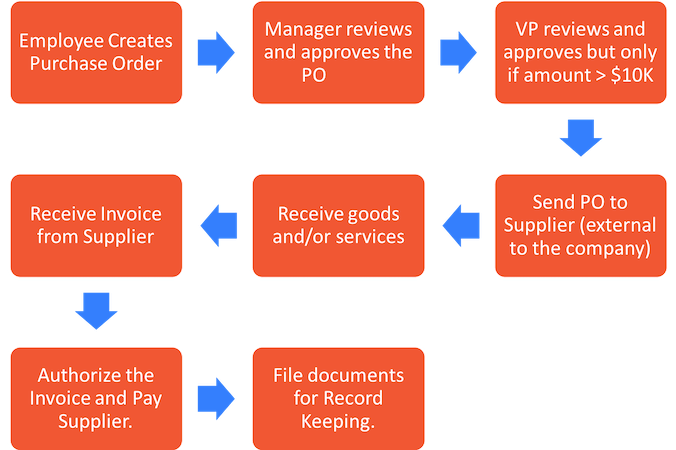
7. Customer Onboarding
You only get one chance to make a first impression, so getting customer onboarding right can mean the difference between churn and long (and lucrative) relationships.
Whether you use a CRM or not, it’s important to connect the dots between the information your customer offers you and the treatment they receive from you. You want to make your customer feel welcome and give them an experience that feels personal (without being creepy).
With or without a CRM, it’s easy to set up a web form that collects the information you need to tailor your onboarding approach to the individual customer and set up subsequent onboarding actions according to the individual customer’s interests.
For instance, if your customer has indicated an interest in learning more about your product, your workflow might trigger an invitation to schedule a quick demo. On the other hand, if your new customer has downloaded your sales catalog, you might follow this with an email or call from a sales rep.
The key thing is to map out what each customer action indicates about their intent and then determine which action triggers which response from you.
READ MORE: Building a Better Customer Onboarding Workflow: How to Hook Customers from the First Interaction
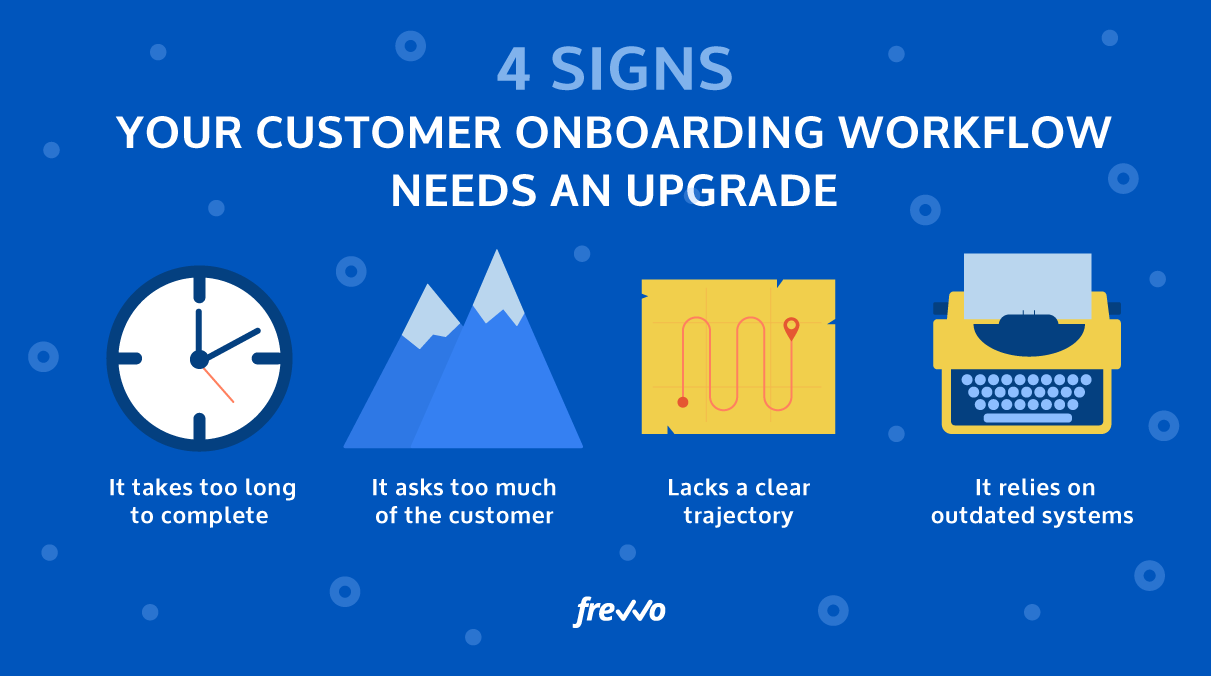
8. Contract Approvals
Getting contracts finalized can involve a lot of back and forth before all parties are in agreement and ready to sign. This can be a very time-consuming process, and delays can result in missed opportunities, especially when there are clerical errors stemming from manual data entry.
The good news is that having a standardized contract origination and approval workflow in place can turn contract finalization into a relatively painless process.
For instance, syncing your database to a digital contract template can help to reduce errors by pre-populating fields like names and contact information.
Meanwhile, form review tools like comments can reduce back-and-forth by allowing all stakeholders to flag and address concerns in the same document.
And like the other workflows mentioned so far, automated routing, notifications, and reminders can keep the process moving and remove bottlenecks. Moreover, digital signatures and PDF exports mean no more printing, scanning, and emailing contracts!
READ MORE: How to Automate the Contract Approval Process
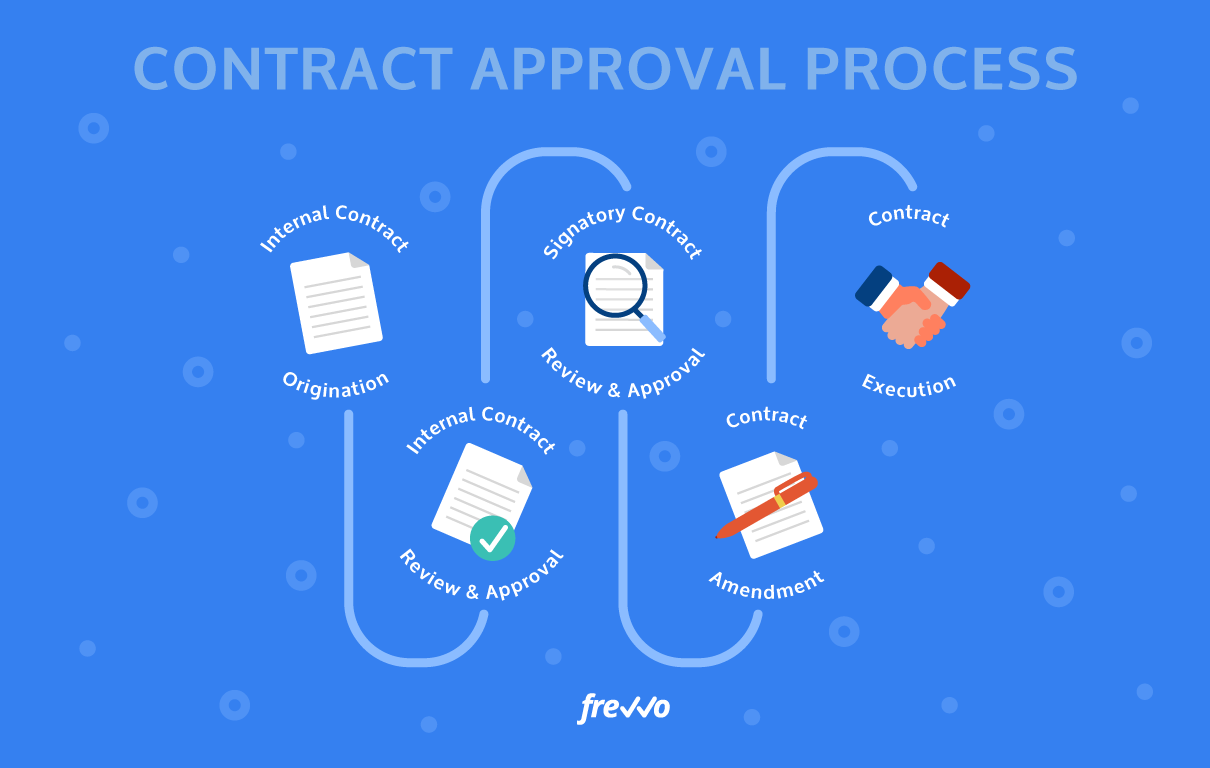
9. Recruitment
Identifying, evaluating, and hiring the top candidate for a role can be a real challenge in today’s competitive talent marketplace. And with much of the workforce being tech-savvy millennials, employers need to take advantage of technology to up their recruiting game.
The recruitment process has many tasks that can be easily automated with ease. These range from sorting and filtering applications to scheduling interviews to communicating with unsuccessful applicants and negotiating offers with successful ones.
Simply automating the dozens of internal workflows that play out behind the scenes to make this happen (e.g., creating and approving the job spec) can help your HR team to focus on what really matters.
READ MORE: How HR Technology Improves Your Recruitment Process
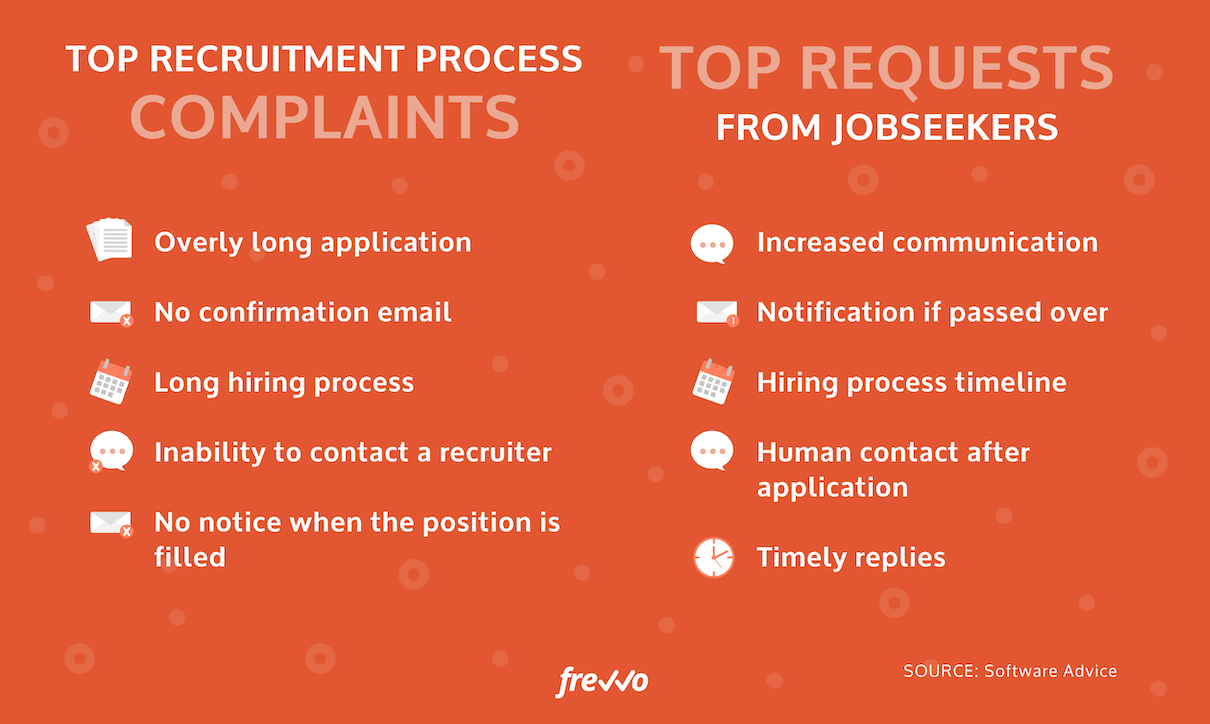
10. New Employee Onboarding
Much like customer onboarding, employee onboarding is essential to the success of your business relationships. Studies have shown that a bad onboarding experience correlates to less engaged employees and higher employee turnover rates.
And after all the time and money you put into hiring top talent, it would be a shame to lose them because your onboarding process is straight from the 90s.
The good news is, a few simple changes — like dedicating the first week to helping your new hire find their feet instead of drowning them in paperwork — can make all the difference.
The sad reality is that even just having a standardized onboarding workflow puts you ahead of most companies. Enabling your new hires to complete much of their onboarding online and in their own time means you can spend those critical first days making a good impression and helping them feel supported to do their job to the best of their ability.
It’s a cakewalk to digitize the tedious administrative parts of onboarding, whether it’s collecting their employee information or having them sign their W-4 and I-9 forms.
READ MORE: Employee Onboarding in the Digital Workplace
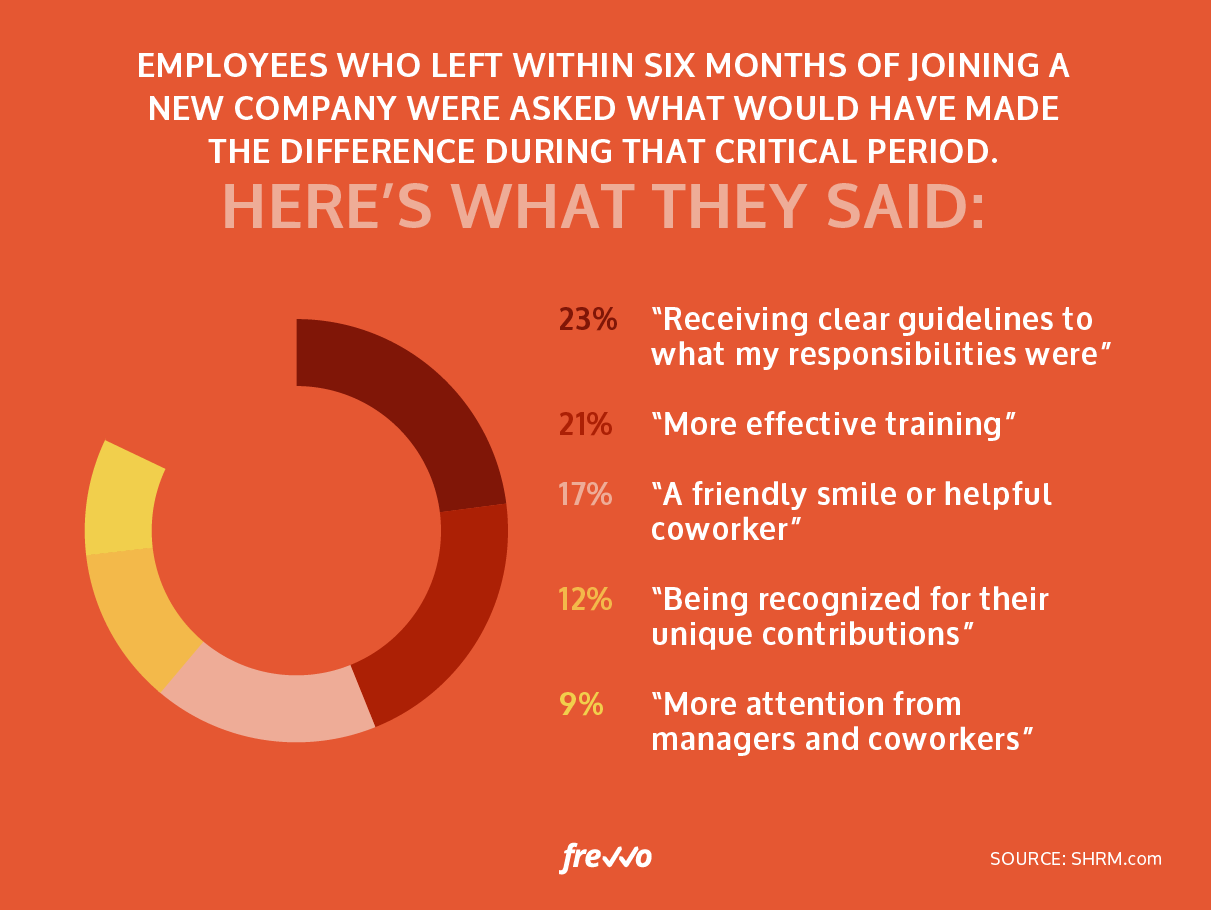
Key Features of an Office Automation System
Automation projects streamline repetitive tasks and make your workflows more efficient. But you need the right tools to take productivity to the next level.
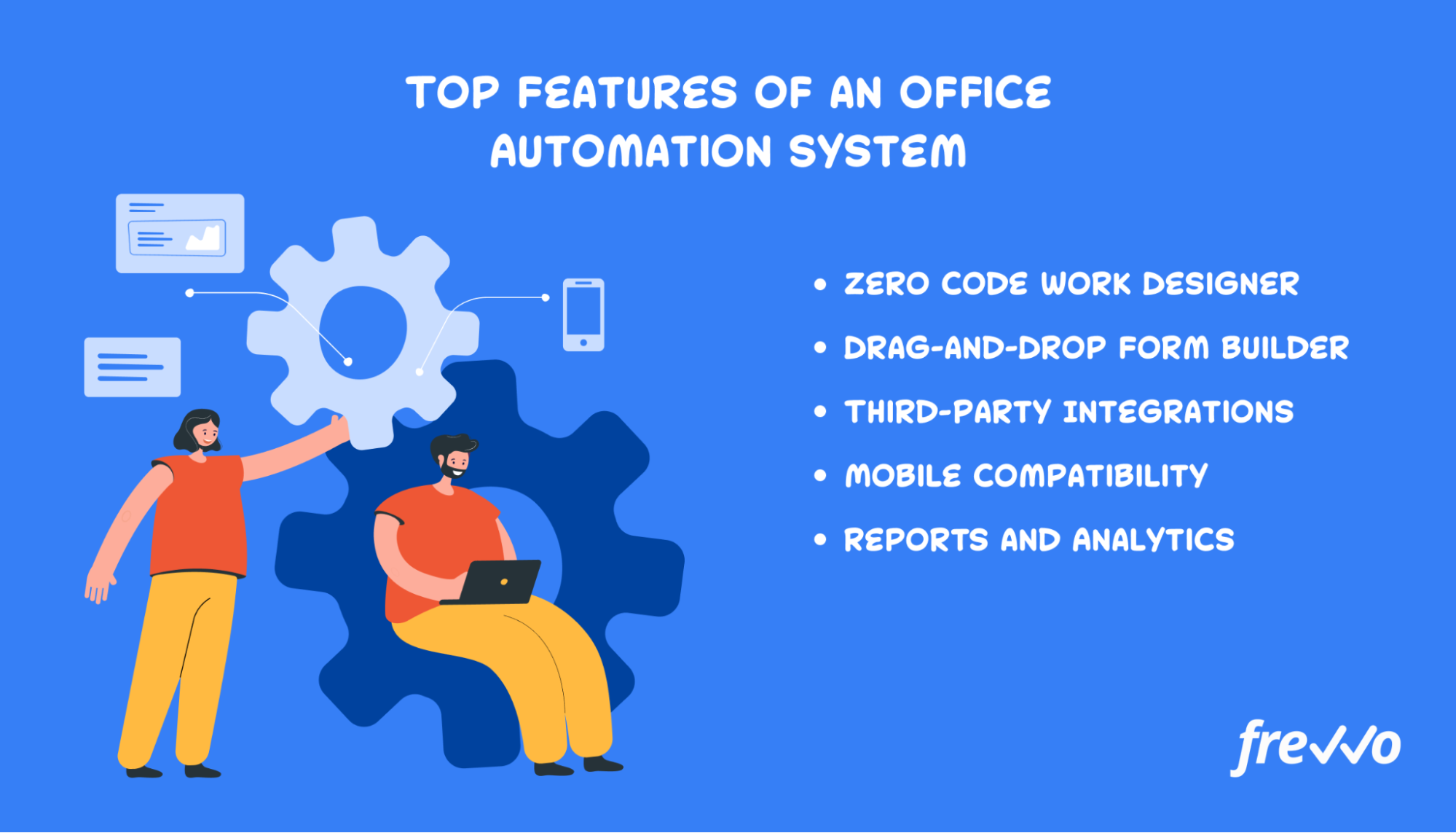
Look for an office automation system with the following features.
Zero Code Workflow Designer
Not everybody has the technical know-how to code automated workflows.
While you can hire programmers, they’re expensive and hard to find. Save yourself the trouble and look for an office automation system with an intuitive workflow designer.
A zero-code workflow designer makes it easy for any business user to create automated workflows in a short period.
Drag-and-Drop Form Builder
What do business processes like employee onboarding, invoice approvals, and sales orders have in common? Forms.
A must-have feature for office automation systems is a dynamic form builder with drag-and-drop functionality. This will allow you to easily create great-looking forms that you can add to your workflows.
Third-Party Integrations
Companies today rely on a multitude of software. You might have a CRM to manage customer data and financial software to track your finances, for starters.
Look for office automation software that can easily integrate with the tools you use. Without this functionality, you’ll waste time copying data from one system to another.
Mobile Compatibility
Work increasingly takes place on the go. If employees can’t access documents or collaborate from their mobile devices, it’ll affect productivity and result in delayed work.
The automation solution you choose should work just as well on smartphones and tablets as it does on desktops.
Reports and Analytics
How do you know if your automation projects are yielding results?
To answer that question, you need an automation solution with in-depth reports. This will allow you to monitor key metrics over time.
If cycle times are longer than usual for a specific workflow, analyzing the data can help you identify bottlenecks. Then you can get to work putting together a process improvement plan.
Automating Office Processes with frevvo
frevvo is a workflow automation tool that can help you cross most of these automation projects off your to-do list.
You don’t even need to know how to code or ask for help from your I.T. department. The workflow builder and form designer are 100% visual and easy to use.
Build custom forms and create automated workflows to meet your exact needs with our drag-and-drop tools.
Follow these steps to start automating your office processes.
- To get started, simply sign up for a 30-day free trial.
- Identify which workflow you’d like to automate first.
- Choose from more than 30 templates to kickstart your office automation. You can also create forms and workflows entirely from scratch with our drag-and-drop form designer. But starting with a template is a great way to get a quick win while learning the ropes.
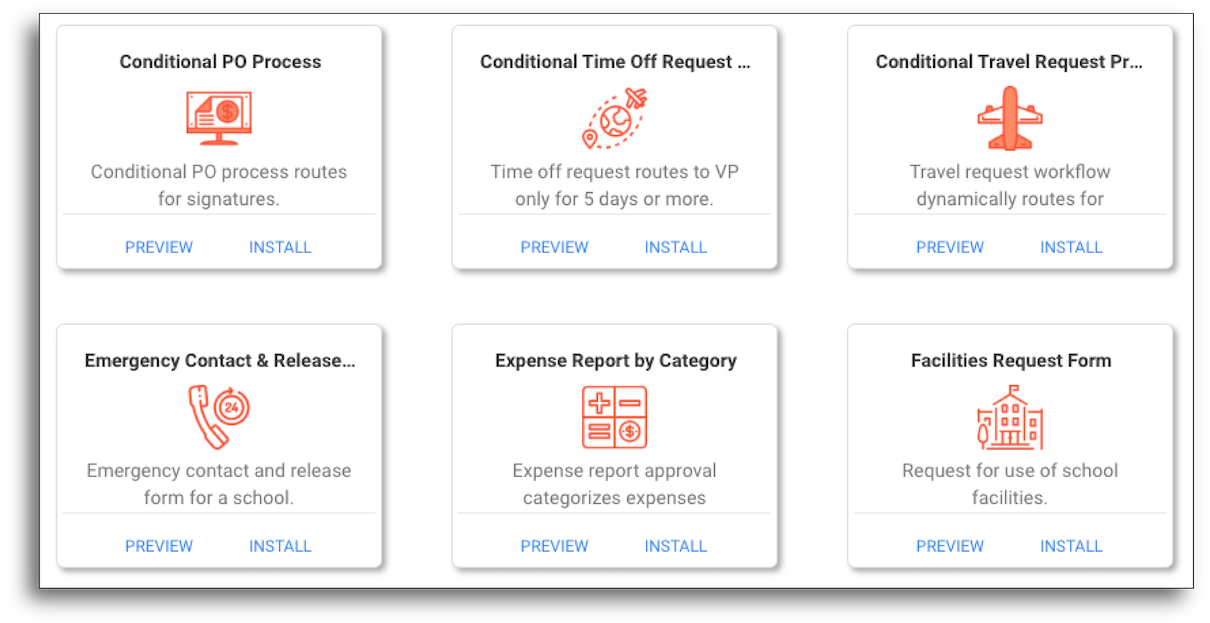
- Customize and configure your form to meet your exact needs and aesthetics. You can import images such as logos and include rules such as mandatory fields and much more.
- Configure your workflow to match your business needs. Set up rules to determine who each form routes to and under which specific circumstances.
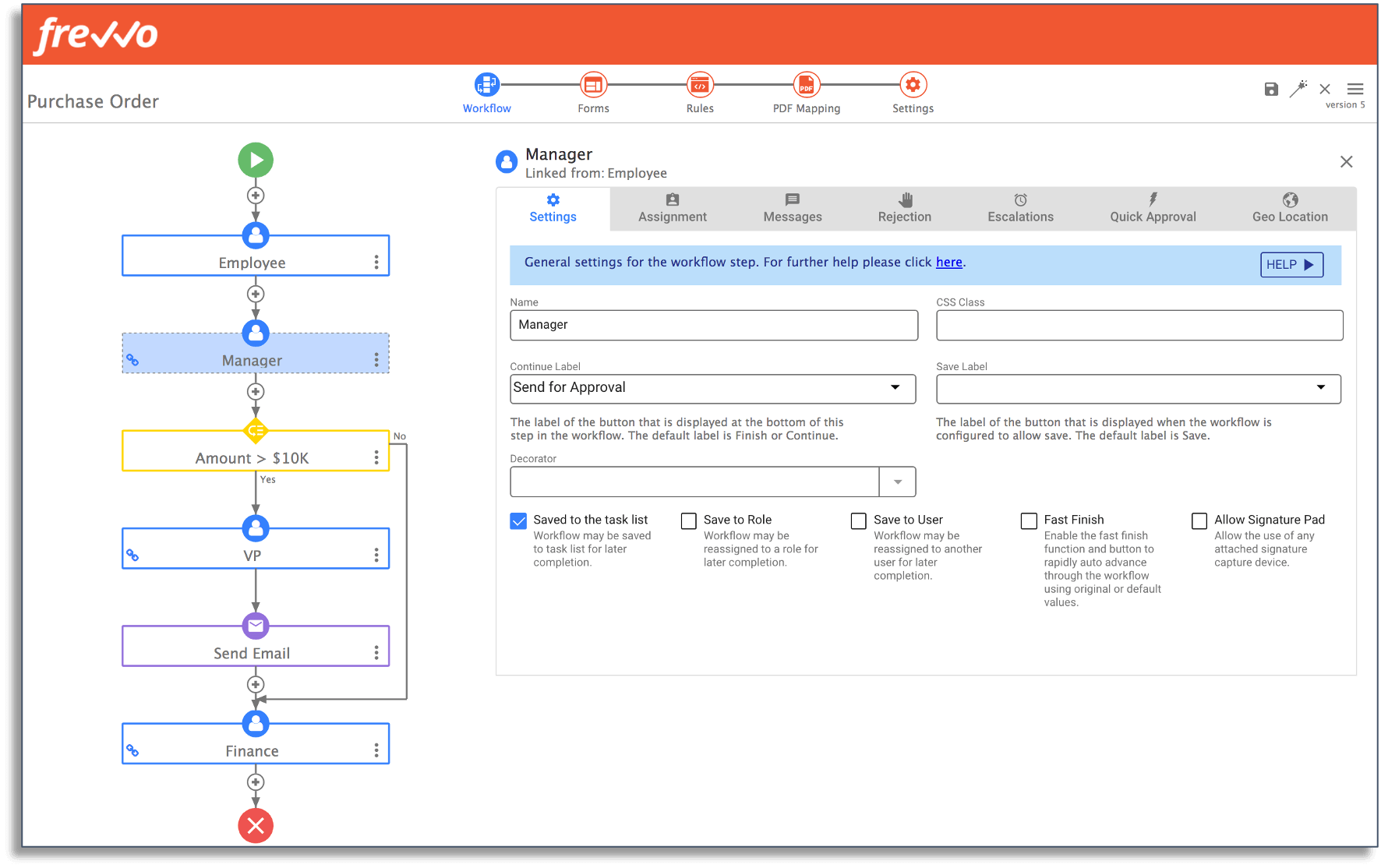
- Test your workflow to ensure everything is working as expected. You can preview how your forms will look on different devices, including smartphones and tablets.
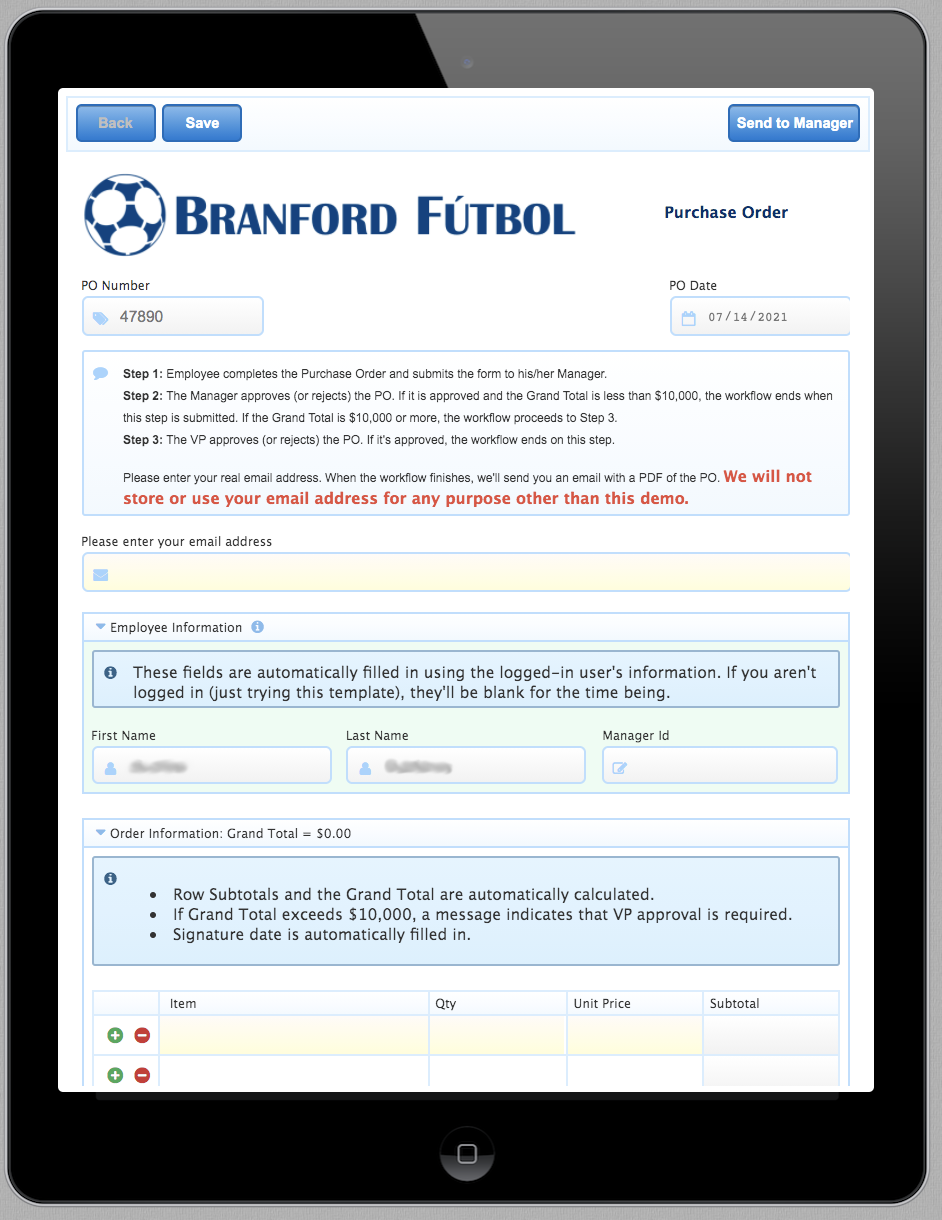
- Deploy your new workflow and make sure to update your business process documentation with detailed descriptions.
Once you see how easy it is to cross automation projects off the list, we’re willing to bet you’ll want to start automating everything.
Start Your Next Automation Project
If your company still relies on manual processes, it’s time to change things up. Start with these office automation projects to streamline operations and free up employees for more engaging work.
With frevvo’s workflow automation software, you don’t need a team of programmers. Use the visual interface to create your own workflows or choose from a library of over 30 templates.
So, what are you waiting for? Try frevvo for 30 days to kickstart your automation projects.

